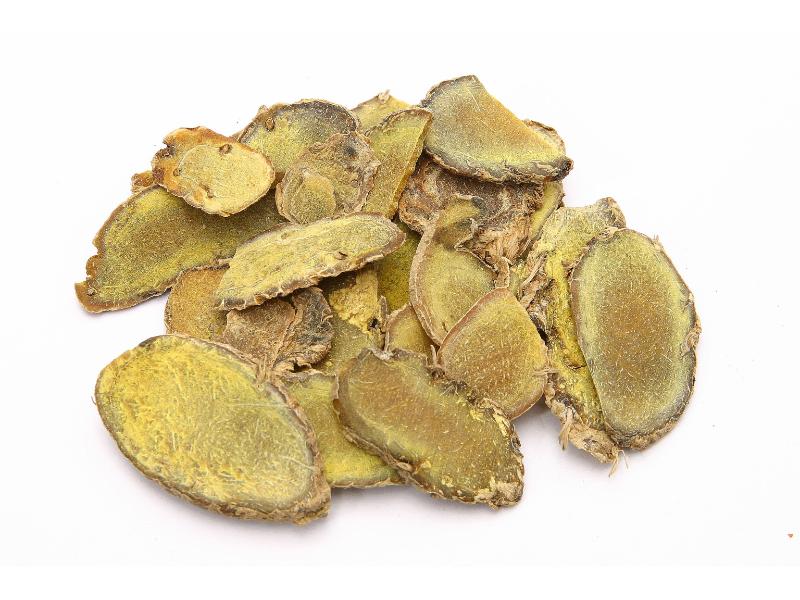Search in medicinals
Curcumae Rhizoma
Curcuma rhizome
莪朮 〔莪朮〕 é zhú

Alternate Chinese names: 蓬朮 péng zhú; 蓬莪朮 péng é zhú
Kingdom: Plant
Origin in PRC Pharmacopoeia: Curcuma phaeocaulis Valeton; Curcuma kwangsiensis S.G. Lee et C.F. Liang; Curcuma wenyujin Y.H. Chen et C. Ling. (PRC Pharmacopoeia)
Origin in unofficial sources: Curcuma zedoaria (Berg.) Rosc.; Curcuma phaeocaulis Valeton; Curcuma kwangsiensis S.G. Lee et C.F. Liang; Curcuma wenyujin Y.H. Chen et L. Ling
Use: Medicinal
Category: Blood-quickening stasis-transforming agents / Blood-quickening concretion-dispersing agents
Properties: Acrid, bitter; warm.
Channel entry: Liver and spleen channels.
Actions and indications:
- Breaks blood and dispels stasis; moves qì and relieves pain: Qì vacuity and blood stasis giving rise to concretions, conglomerations, accumulations, and gatherings, to amenorrhea, and to pain in the heart region and abdomen.
- Moves qì and disperses accumulations: Food accumulation with distension and pain in the stomach duct and abdomen.
- Additional uses: é zhú may be used to treat injury from knocks and falls and painful stasis swelling. For this purpose, it is combined with medicinals that transform stasis, disperse swelling, and relieve pain.
Dosage and method: Oral: 3–15g in decoctions. Use raw to move qì and disperse food accumulation; use mix-fried with vinegar to dispel stasis and relieve pain.
Warnings: Contraindicated in pregnancy and profuse menstruation.
Product description: This is a fat, pear-shaped rhizome, 1–4 cm in diameter. The exterior surface is a yellowish brown and is rough in texture. It has prominent annular notes about 5–8 mm apart, and the scars of lateral roots. It is firm and hard. The decocting pieces are transverse slices, about 2–8 mm thick, revealing a brown cut edge with yellow speckles at the core. Slices treated with vinegar are much darker, and less yellow in color.
Quality: Best are large, firm, smooth rhizomes that are yellowish green on the cut edge.
Production area: Guǎngxī, Sìchuān, Fújiàn, Guǎngdōng, Zhèjiāng, Yúnnán, Táiwān.
Back to search result Previous Next